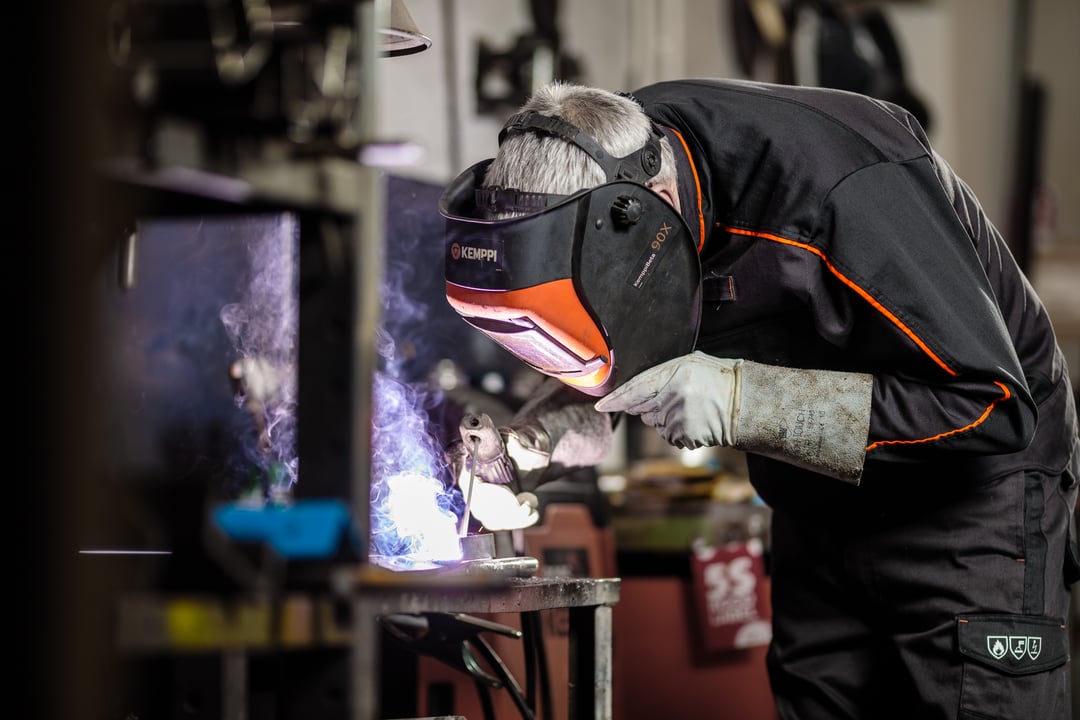As a protective fabric manufacturer, there are certain norms - or regulations - that we must adhere to in the production of our fabrics. The fabrics and production processes required for us to adhere to these regulations sometimes means that working sustainably must take a back seat. Our challenge therefore becomes: how do we make protective fabrics that are safe but also sustainable?
What are norms?
Across the EU, PPE norms exist to regulate the level of risk to workers in different categories of work. Essentially, norms are a series of tests that are designed to measure how a garment performs against a risk. Protective fabrics are sent to an official testing institute, who carry out the tests and ultimately provide that garment with a rating based on its performance. These ratings then tell a protective clothing supplier what risk factors the garment protects against, e.g. heat, flame, and chemical splash. They can also tell the supplier how well their garments perform when exposed to particular risk factors in work environments, for instance low-light conditions, which would require garments with high-visibility.
At TenCate Protective Fabrics, we appreciate that norms are necessary. They let us know that the fabrics that make up the garments we are supplying are doing their job: upholding the highest levels of safety for those who need it most. But with the growing shift towards environmentally-aware practices across all industries, there is another question that is always on our minds:
Do the current EU norms incorporate sustainable practices?
The short answer is: not necessarily. Take, for example, a workplace that has fire as a risk factor - and therefore requires flame-resistant protective clothing. One of the key elements of sustainability is, of course, recycling. To be sustainable as an industry, we need to go beyond just using environmentally-friendly fibres and chemicals, as we do today. To be truly sustainable, we need to be able to keep our fabrics moving in circularity. Mono-blend fabrics - which are made up entirely of one fibre, such as aramids - can be recycled, as they can be easily broken down and re-used. However, we currently have no mono-fabrics that are both flame-resistant while being comfortable at the same time. At present, the fabrics are classified as multi-norm blended fabrics. Sadly, blends are difficult to recycle, as we do not have the technology (yet) to split the fibres into their original state.
Or, as an another example, take a workplace where the colour of the protective clothing is essential, for instance outdoor construction workers or those who work in low-light conditions. For these workers to remain safe, it is necessary for their garments to have a bright, visible colour - often yellow or orange. In order for such garments to maintain their colour, certain chemicals have to be used. These chemicals can be harmful to the environment, and require large amounts of water and energy due to the current methods of dying that require multiple washes and create vast amounts of effluent.
How do we balance norms and sustainability?
Without a doubt, having a protective clothing industry where sustainability and safety go hand-in-hand would be brilliant. At TenCate Protective Fabrics, we are striving to develop a working practice where our fabrics not only keep their wearers safe, but produce the lowest possible ecological footprint on the environment. In the current climate, there are definitely options available to us when it comes to working more sustainably. However, our requirement to meet current EU norms - such as flame-resistance and visibility as outlined above - means that we cannot yet work in a way that is 100% sustainable, as this would mean compromising on the protective qualities of our fabrics.
But this doesn’t mean that we should just accept the status quo. If we want our industry to become sustainable, we must discuss the norms that are in place. We know that we are in a climate emergency, and that all industries must find ways to adapt in order to address this. Through discussion between EU governing bodies and protective clothing manufacturers, we must look for new, practical solutions that allow us to maintain safety norms but also minimise impact on the environment.
This discussion also extends to you as a consumer of protective clothing items. We’d love to know what you think about the interplay between norms and sustainability in the PPE market. What could our industry do better? Get in touch and let us know your thoughts!



![FR Fabrics Guide [EN]](https://eu.tencatefabrics.com/hs-fs/hubfs/EU%20-%20Images%20website/EU%20-%20Mock-up%20nieuwe%20afmetingen/FR%20Fabrics%20Guide%20%5BEN%5D.png?width=170&name=FR%20Fabrics%20Guide%20%5BEN%5D.png)



.png?width=399&name=Risk%20management%20for%20PPE%20clothing%20in%20the%20EV%20and%20battery%20industries%20(5).png)
